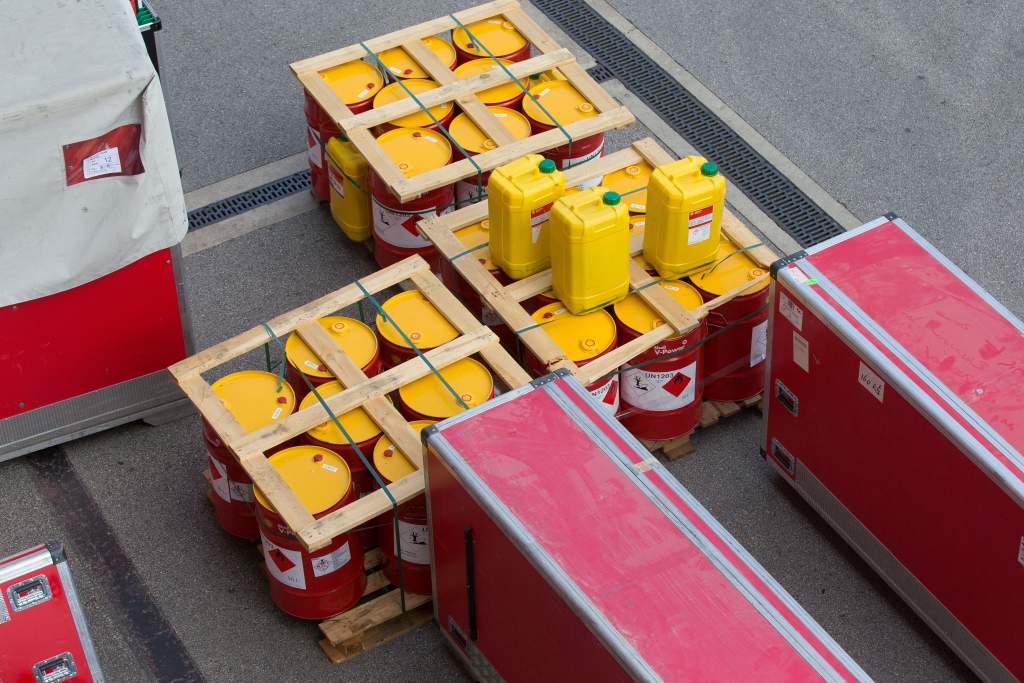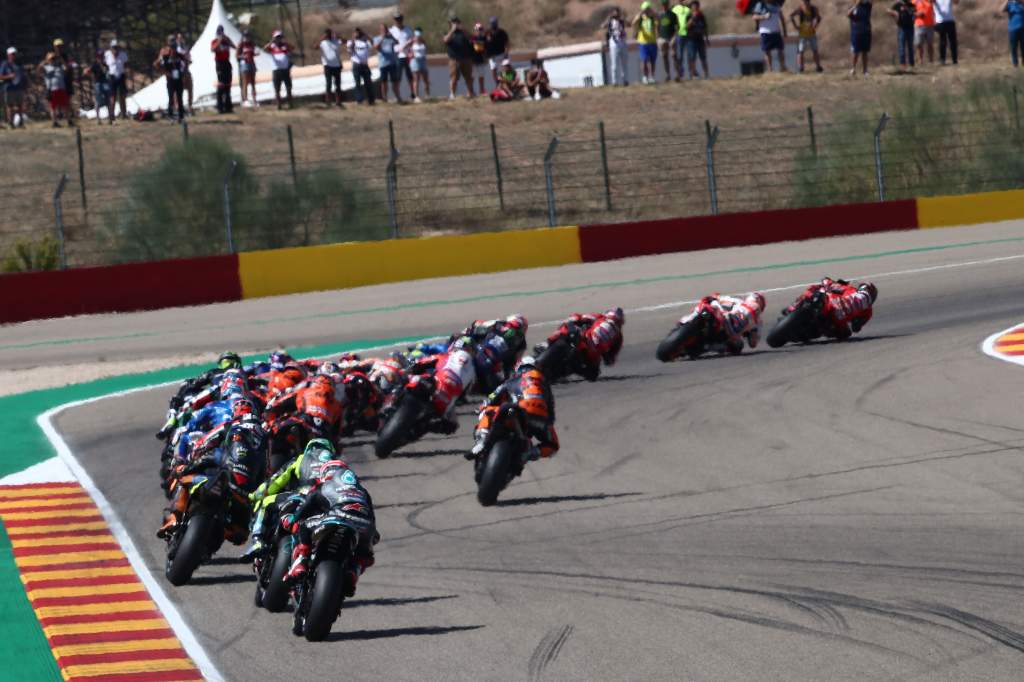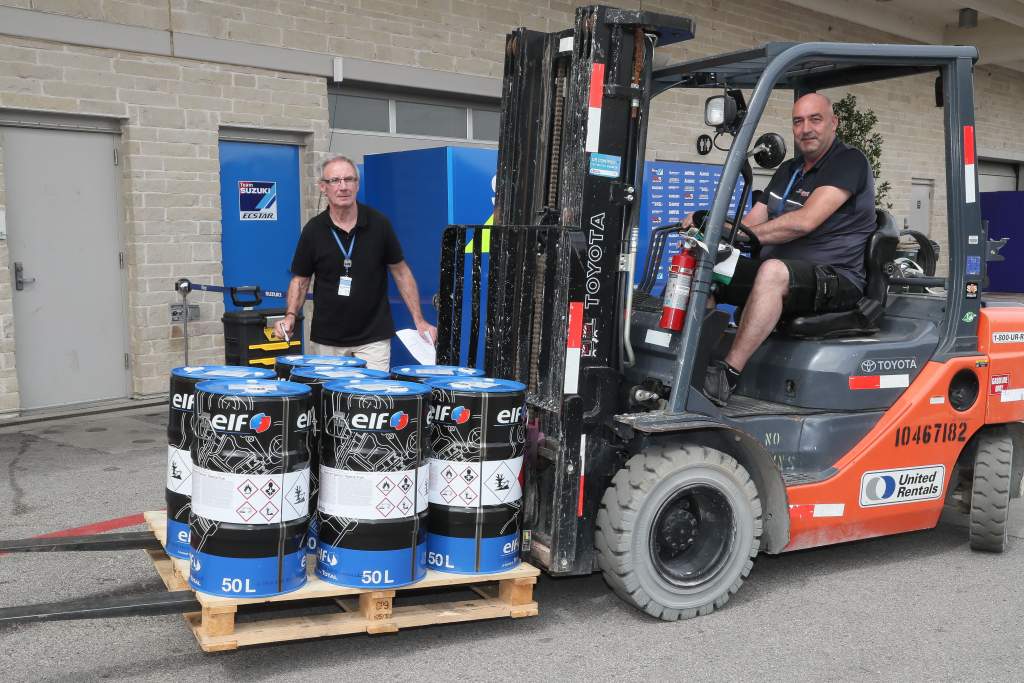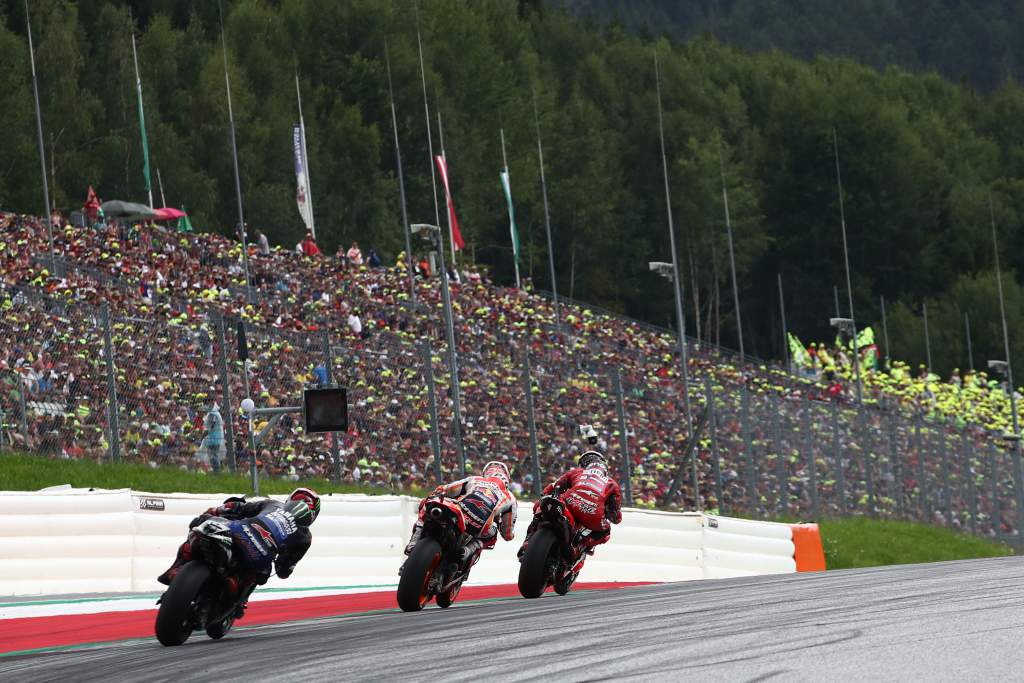With the news that MotoGP will mandate a change to existing fuel regulations to move towards a fully synthetic product from 2027 onwards, it marks the first significant update to the series’ petrol rules since the move from leaded to unleaded in 1998.
Very much in line with series promoter Dorna’s ambitions to make MotoGP more environmentally friendly, what change will the new rules bring to the championship?

Well, the first question is, what exactly is a synthetic fuel? Chemically, the new product, which will need to comprise 40% of the fuel by 2024 and 100% by 2027, is functionally almost identical to the petrol that is currently burned – a hydrocarbon chain that is broken down by oxidation in a cylinder to produce heat. The mechanics of an engine won’t change at all with the new regulations.
What makes it different is how it’s made. Currently, petrol is produced by distilling crude oil into fractions of different densities. As we all know, drilling for and transporting oil is a messy process, and one that both produces significant waste in the form of greenhouse gases and which is based on a finite resource that often comes from difficult-to-operate-in places.
Synthetic fuels, on the other hand, can be produced by combining hydrogen from water with carbon dioxide already in our atmosphere. Using huge amounts of energy produced from renewable resources, it’s a much greener process, with the technology so far being driven by Porsche in particular thanks to its building of a huge new production facility in South America.
So, given that the end result is something chemically very similar to what is already in use in MotoGP, what impact will the changes have on the series?

While many who don’t quite understand the change in technology might believe that the switch represents a backwards step, the reality might well be the opposite.
Just like tyres can be and are modified weekend to weekend to suit the characteristics of a circuit, so too may be fuels thanks to the new process being used to create them. More horsepower at longer tracks and better acceleration out of corners at others should in theory now be possible, as fuel technology catches up with some other areas of the series.
That means that the addition of, and eventual move to, synthetic fuel, will bring something new to the championship, according to a paddock insider who spoke to The Race.
“Even throughout the year, it’s not as if you use the same one, even if they come from the same manufacturer,” the team member admitted.
“You have different batches – we’ve tested one for next year, everything is different. And the behaviour of how the whole bike feels can change. It’ll change rider feeling, it’ll change the power of your engine, it’ll change the characteristics.
“I think that if there’s a positive to it, it’ll make things closer than they are now. By dictating the percentages of what it has to be, it’ll bring things closer.
“If you put, say, Shell instead of Elf into your bike right now, you’d find a difference, because if you make a big change the riders will feel a difference. With this rule for 2024 and then 2027, it lets everyone work towards it now.

“There’s a lot to think about. It changes the fuel temperature, and one of the things we’re going to have to consider is how the engine runs with the synthetic fuel. It changes the temperature in the fuel rails, and it’s things like that that actually decide how much power you’ve got.
“With all these things changing, will you need changes to the engine? That’s hard to know. There are all sorts of variables with it, although thankfully fuel isn’t as big a component as it is for, say, Formula 1, where it makes a lot of difference. But it will change things.”
And these updates come at a key time in MotoGP, with fuelling strategies now more important than ever as bikes become increasingly powerful but the amount of fuel that can be used during a race remains capped at 22 litres.
“What’s becoming clear as the years go on is that you can’t use full power anywhere any more, or only at a very few places like Sachsenring,” the team member explained. “If you did the Red Bull Ring or Mugello on full power, I think you’d run out of fuel with three laps to go.

“You can do a lot to change the fueling, to make it richer or leaner, and it doesn’t change the characteristics much in the race mode.
“But it does allow some manufacturers, like the Bologna bikes [Ducati], to give a lot more in qualifying, and it means that something like a red flag at the Red Bull Ring is a disaster to everyone else.”





